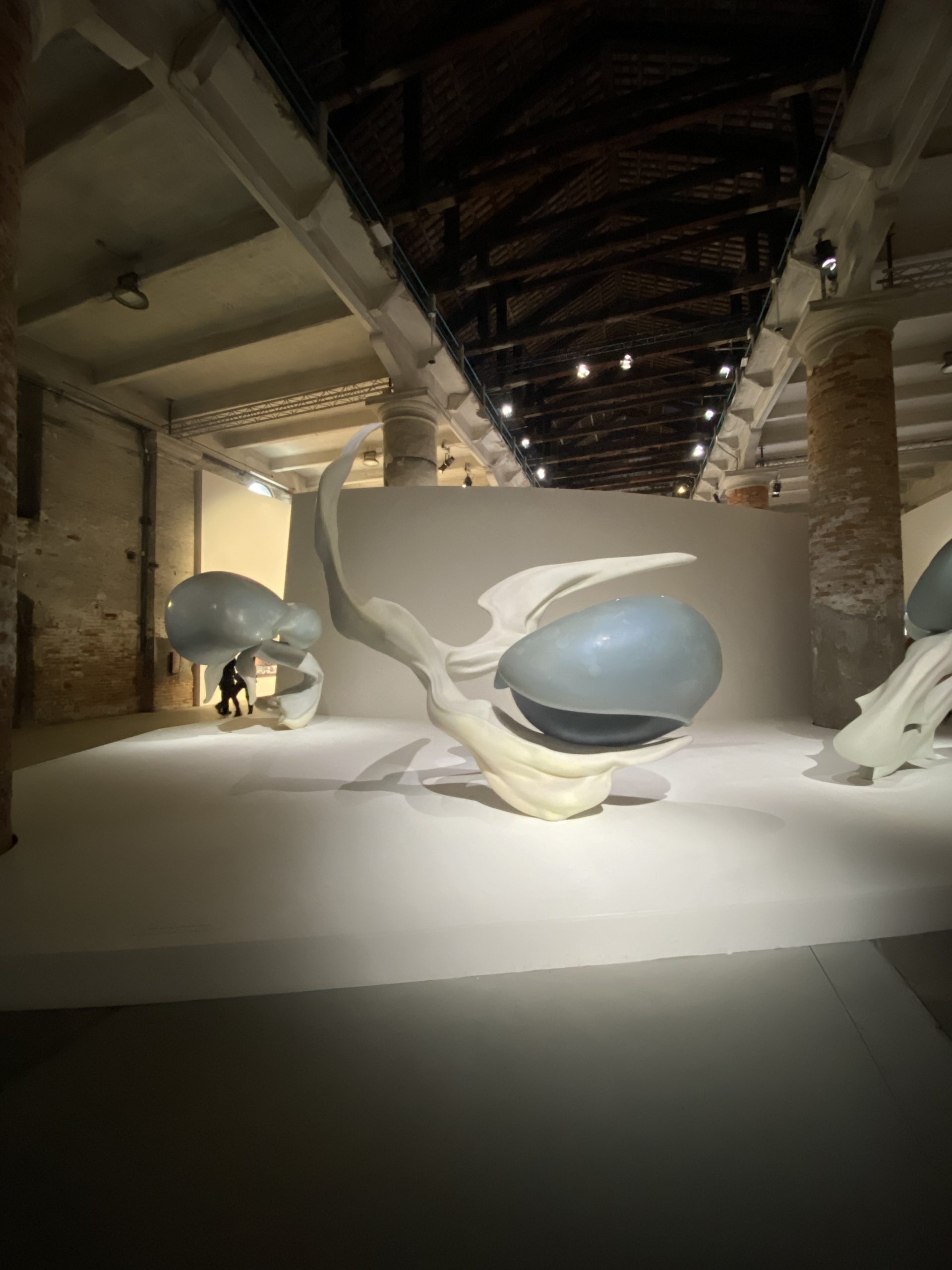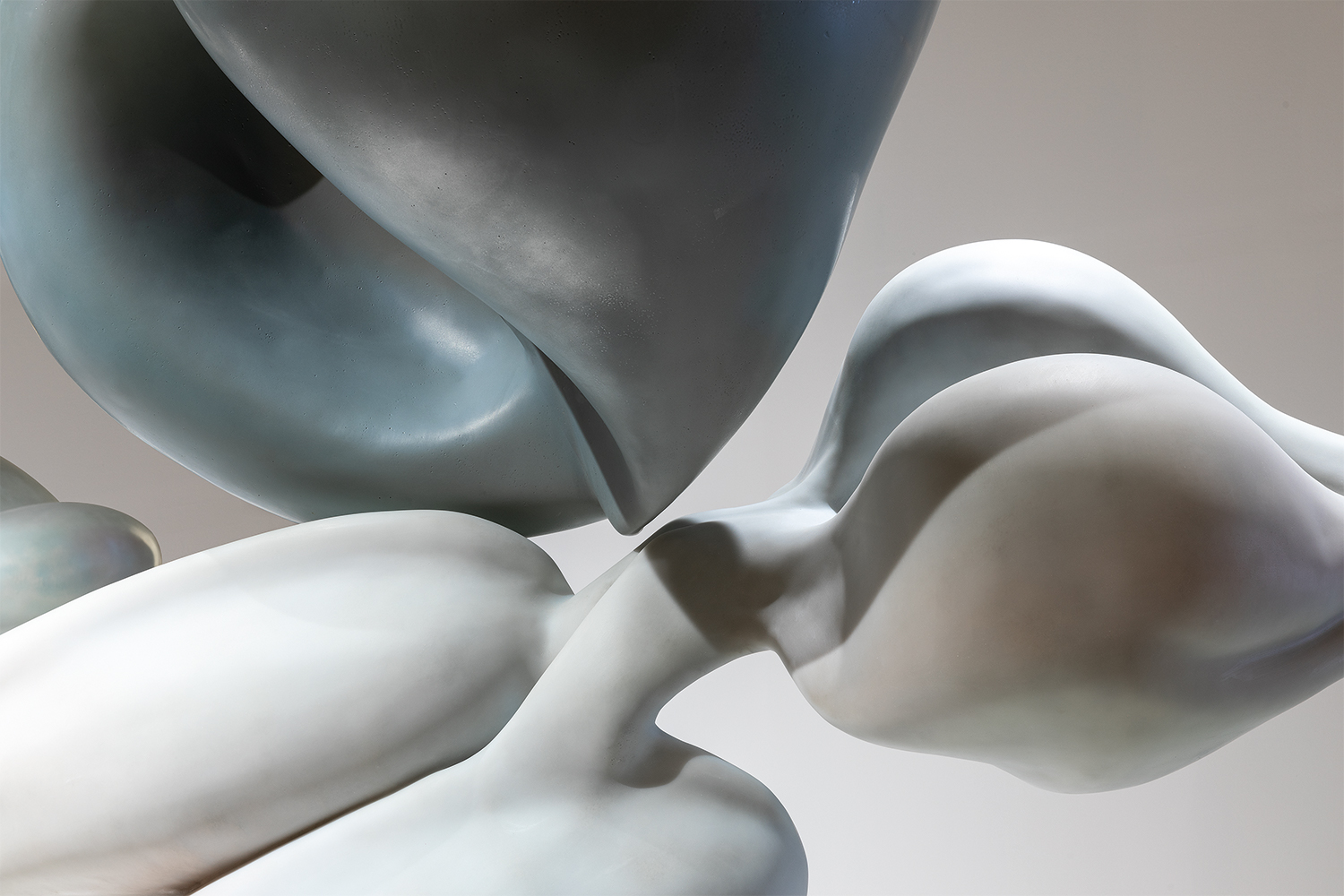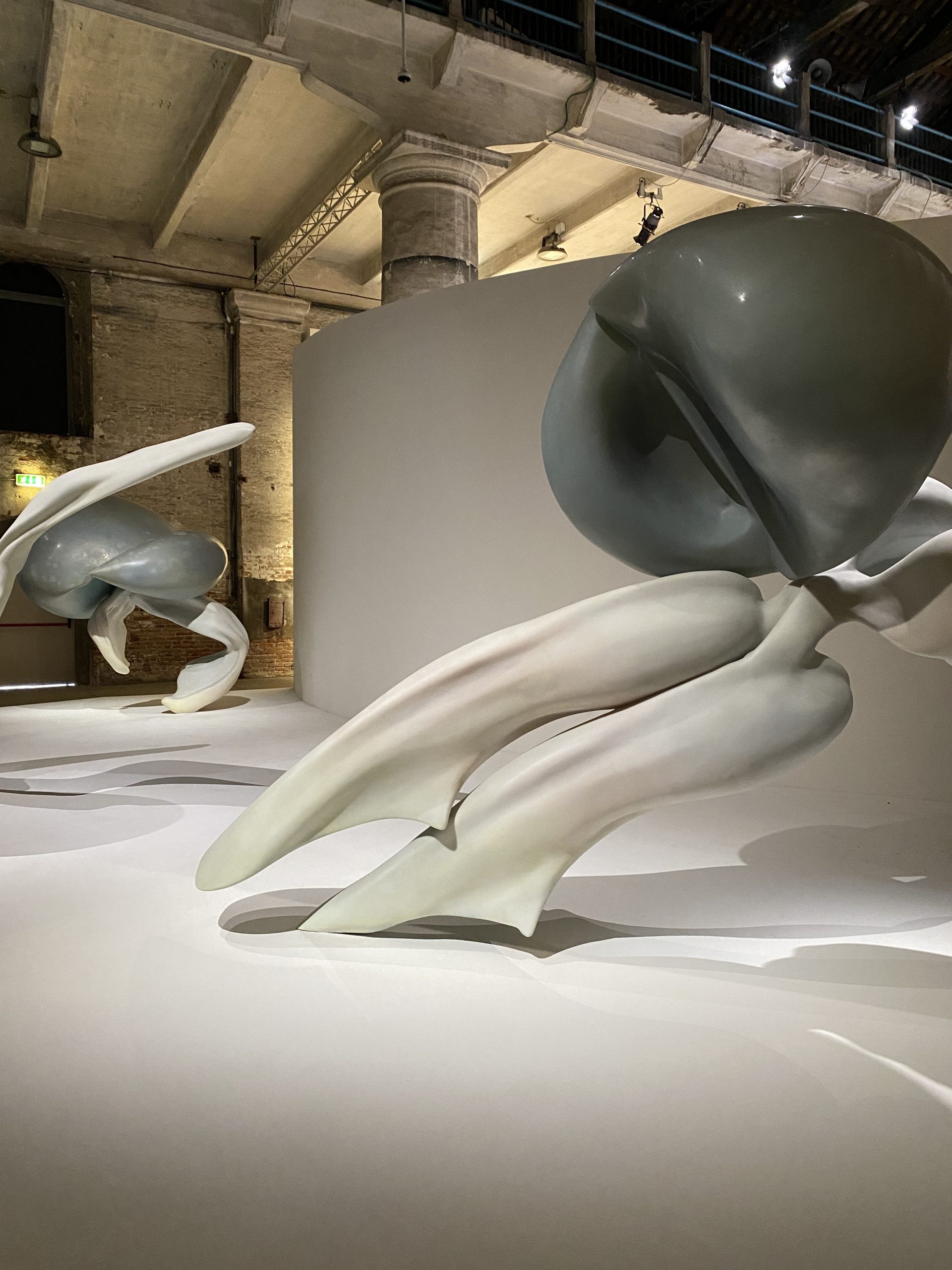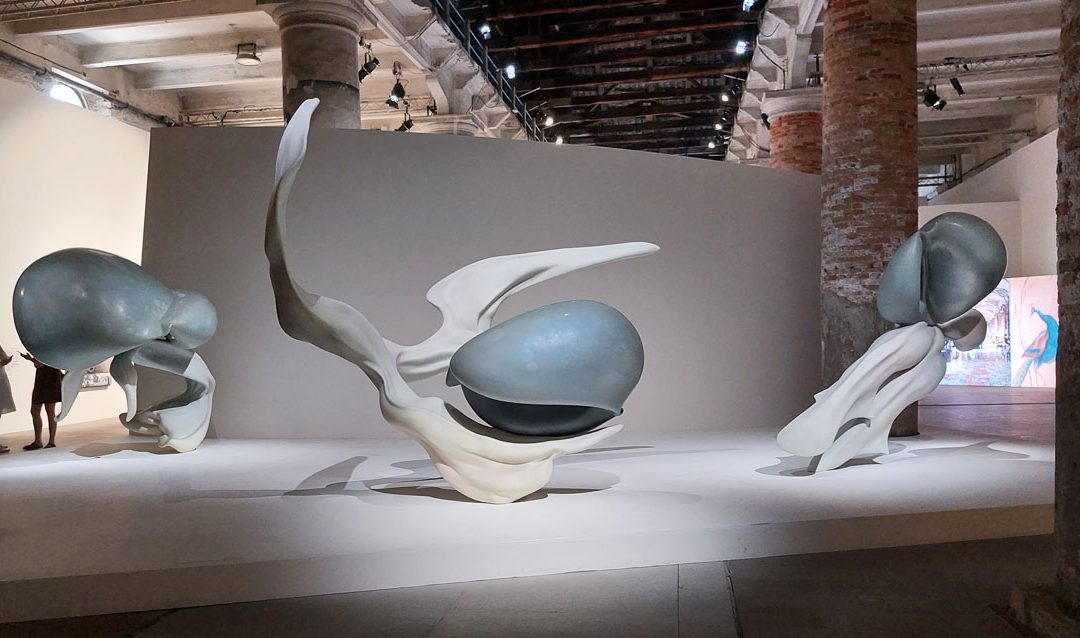Marguerite Humeau: the marriage of science and art
The 59th edition of Venice Biennale hosts for the first time the emerging French artist Marguerite Humeau (1986, Cholet, France) and with her a profound reflection on the mysteries of humanity.
Entering the last capsule of Arsenale, named The Seduction of a Cyborg, the visitor sees three monumental sculptures with fluid, sinuous, almost dancing forms.

Marguerite Humeau, Biennale Arte 2022
The work is not intended to recall a specific figure: it could be unknown sea organisms, but also cells suspended in an organic liquid or even space travelers.
In an interview with Camerae Magazine, the visionary artist reveals that her projects always stem from gaps, from enigmas related to human experience. This is why the realisation of her works is always preceded by the investigation of three eras of humanity: antiquity, the Middle Ages and the contemporary era.

Marguerite Humeau, La Niña, Migrations, 2022. Detail – Photography by Roberto Marossi, Courtesy of the artist; C L E A R I N G, New York / Brussels; and White Cube, London – Credits Flash Art
This interest led to the collaborations with zoologists, biologists and paleontologists, which can also be seen in Marguerite’s use of materials: she created an alchemical mixture of resins, algae, minerals and glass to whom she also added bone dust.
The use of materials and forms thus create these supernatural-looking figures, ultimately evoking an understanding of the main theme that has plagued the history of mankind, to whom has connected people from all historical eras: mortality.

Marguerite Humeau, Biennale Arte 2022
Her reflections on animal morphology, and on the existence of an afterlife, also got on the direction of climate change, from which unexpected narratives can be arise, as exemplified by the High Tide installation hosted by the Centre Pompidou in 2019.

